Peru’s Machu Picchu is hardly the only prize from the past worth exploring – in fact, with a trip to Machu Picchu costing the average visitor hundreds of dollars a day, there’s a very good chance you could enjoy all seven of these places for less than the cost of Machu Picchu.
Presenting 7 other archaeological sites worth exploring in northern Peru (note the cities in parentheses are the best places to start from)
Table of Contents
Museo Tumbas Reales de Sipan / Royal Tombs of Sipan (in Lambayeque, or 11km from Chiclayo)
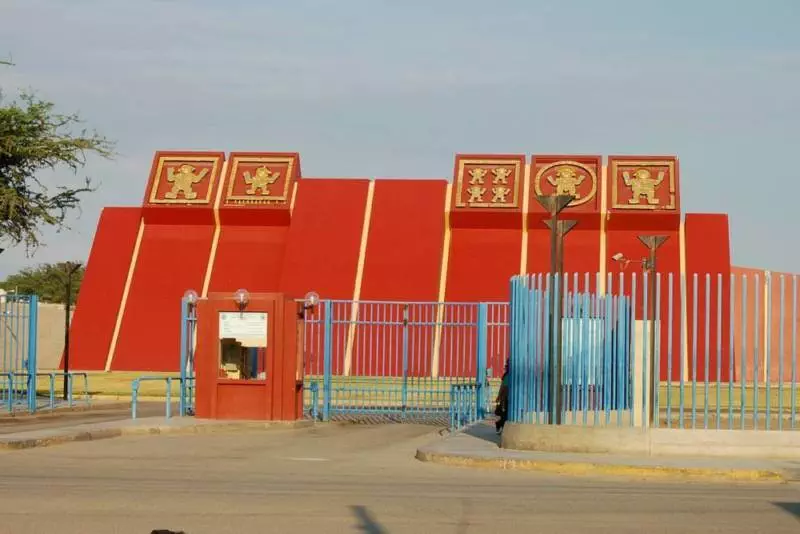
You’ll have to settle for a photo of the outside of the museum, since no photos are allowed inside. A locker room is set up in the lower level for cameras and bags, so you’re unlikely to sneak a camera in (or get any good pictures with your smartphone, between the low light and plenty of people watching).
Get past that rather unfriendly practice and there’s plenty going on. Go on your own or with a guide (I didn’t catch the price) and begin taking in one of the few places not looted by robbers. The ceramics here are some of the best preserved legacies of the pre-Incan Mochicas, while the recreations of the Sipan pyramids and and the Sipan burial chamber are wonderfully detailed.
Why Lambayeque, though? This tiny town near Chiclayo is not where the ruins were found, but rather where the lab was built to analyze them. Presumably they could have ben transported elsewhere in Peru, but perhaps it was easiest to set up shop here and give this town a reason to be on the map. Whatever the case, it’s easy enough to reach and one of the largest collections of authentic antiques.
Chance of being the next Machu Picchu: pretty good. It already has the artifacts and modern infrastructure, isn’t overpriced, and is reasonably easy to reach.
Name: Museo Tumbas Reales de Sipan (Royal Tombs of Sipan)
Address: Antonio Monsalve Baca, Lambayeque (GPS: -6.705036, -79.899288)
Directions: From Chiclayo, jump in a minivan for Tucume or Lambayeque. Jump out when you arrive in Lambayeque, which should be in front of a block-long market. Look for the yellow-signed Inka Farma (pharmacy). Look down this side street (Vilchez Mercado) for the large red building and walk straight towards it.
Hours: 9:00am-5:00pm everyday
Admission: 10 soles
Phone: (074) 283977
Website: http://www.museotumbasreales.com
Museo de Sitio Túcume / Tucume pyramids and museum (35km from Chiclayo)
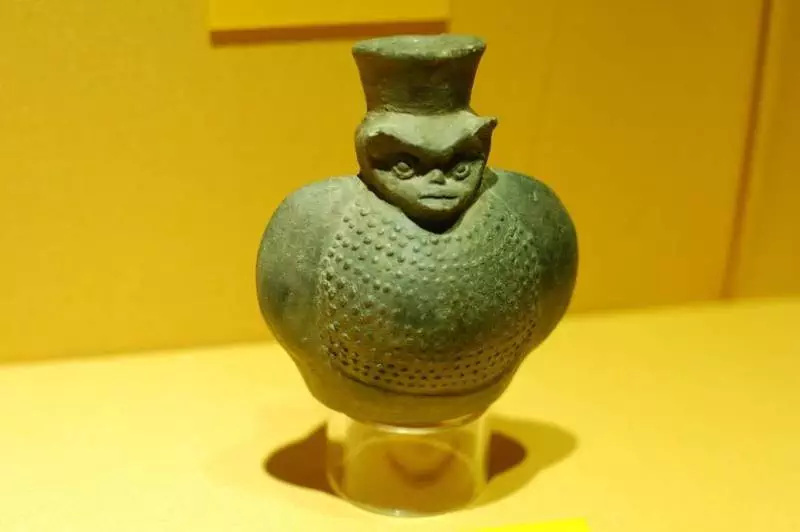
Inaugurated in September 2014, the museum is the newest aspect to the site, along with the other parts near the entrance. It’s a worthy visit with good English and blessed air-conditioning (doubly so if you walked here), and a cafeteria and souvenir shop round things out. Ticket options are a little quirky – a ‘route A or B’ ticket costs 8 soles, while an ‘Integral’ ticket for both costs 10 soles. No one’s checking the tickets once inside, however, and even figuring out where things are along those routes is difficult.
Get more than a few hundred meters away from the entrance, however, and you’ll be relying on a dirt road bounded by white stones. The area is under some renovation, so there’s a fair chance it will look pretty different a decade or so from now.
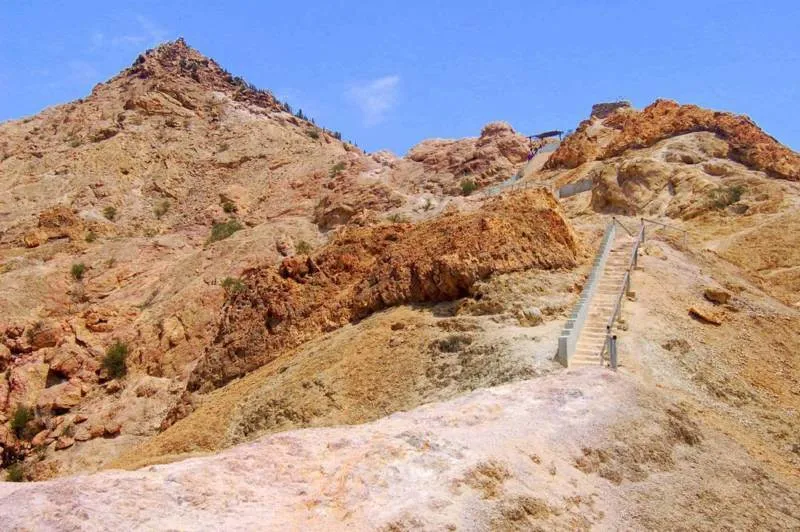
The main attraction are the eroded, fading pyramids, one of which was under renovation / construction. The dozens of pyramids / mounds here date back to the 9th century, and was used as the site of multiple capital cities. Climb the relatively new stairs to get a great view of the area, but almost nothing has been restored.
There’s no signage indicating when the renovation / construction would be complete, but the site definitely seems like it’s gearing up for a shift to something better. Some parts have already arrived (the museum, the newer stairs to the viewpoints), but the rest will take some time.
Chance of being the next Machu Picchu: slim. By the time this place is complete, other sites will have likely garnered more attention.
Name: Museo de Sitio Túcume (Tucume pyramids and museum)
Address: Acceso al Museo, Túcume (GPS: -6.513350, -79.847321)
Directions: From Chiclayo, jump in a colectivo (minivan) bound for Tucube. The best place to catch on is along Av. Augusto B. Leguia, heading west. The minivan will drop you off right by a side street about 2km away from the entrance. From here you can either walk uphill or spend a few soles per person on a trishaw / tuktuk.
Hours: 8:00am-4:30pm
Admission: 8 or 10 soles (The 10 soles ticket seems unnecessary, since there’s no one checking tickets once inside.
Phone: none
Website: http://www.museodesitiotucume.org/
El Brujo (62km from Trujillo)
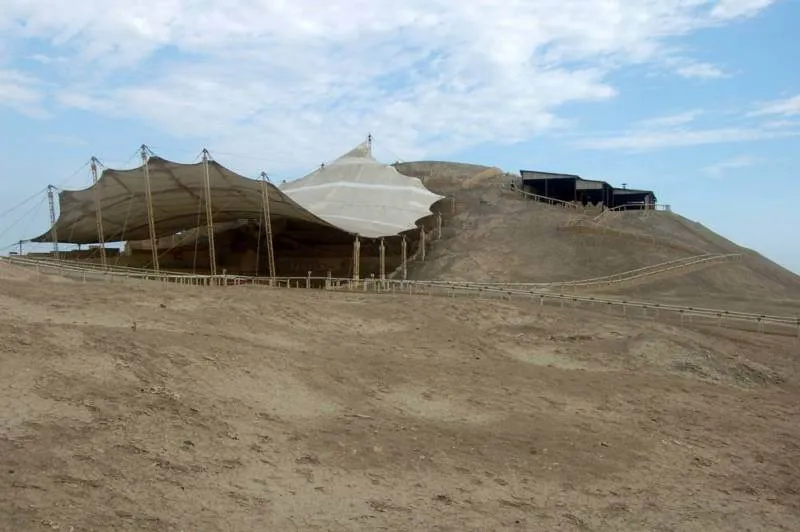
The story of the female, tattooed leader from the 4th century AD is a compelling one. The ‘Lady of Cao’, as she’s now known, was a matriarch discovered in 2005-6 while excavating the area. This complex opened in April 2009, and in many cases still looks brand new, if a bit drab. We read conflicting reports that said the place wasn’t technically open to the public, but as of our visit in March 2016, this does not seem to be a problem. The occasional security guard is around, as are some signs to explain and offer context.
After getting tickets, start with the museum (frustratingly, no photos allowed, put your bag in a secured room) to take in some of the area’s history. Even with the full excavation still underway (and likely decades in the process), there’s enough here to give you a fair idea. An entire room is dedicated to the Lady of Cao herself, along with the gold and precious metals she was buried with.
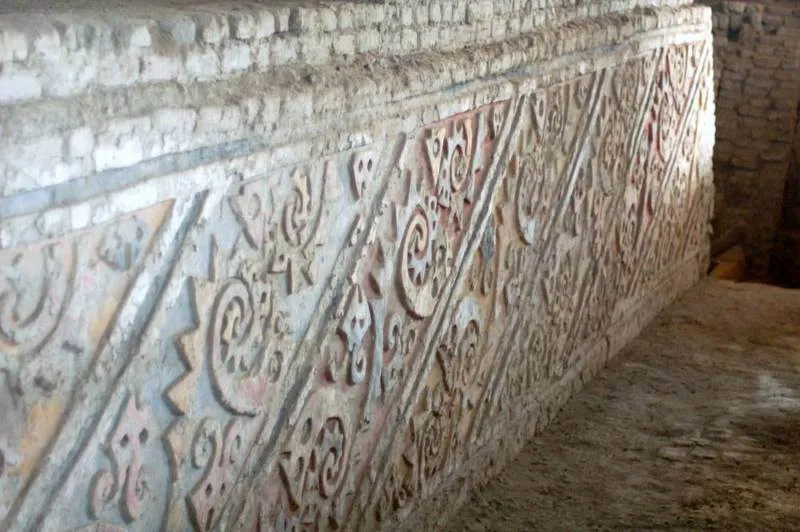
What’s here is original, with easy walks to reach all aspects of the site you’re allowed to access. The tours may have 4-5 names on the brochure, but you’re actually visiting a single site (and quite possibly a souvenir store on the way home). Get a nice view of the coast before moving on.
Chance of being the next Machu Picchu: decent. The story is like the place: it needs some more developing and fact-finding, along with a greater awareness it’s open to the public.
Name: Huaca el Brujo / Huaca Cao Viejo
Address: Route 102, Ascope Province, La Libertad (GPS: -7.913959, -79.304207)
Directions: We opted to book a tour from Trujillo (50 soles per person for transport and guide, ticket not included). Plenty of agencies are around the Plaza de Armas to help with the three-hour tour. Gung-ho on going your own way will involve two separate minivans / colectivo to Chocope (a 1 1/2 hour ride) from Ovalo del Papa in the southwest part of Trujillo. Once there, jump in a colectivo to Magdalena de Cao (a 20 minute ride), then find a mototaxi for the final stop.
Hours: 9:00am-4:00pm
Admission: 10 soles
Phone: none
Website: none
Kuelap Fortress / Fortaleza de Kuelap (70km from Chachapoyas)
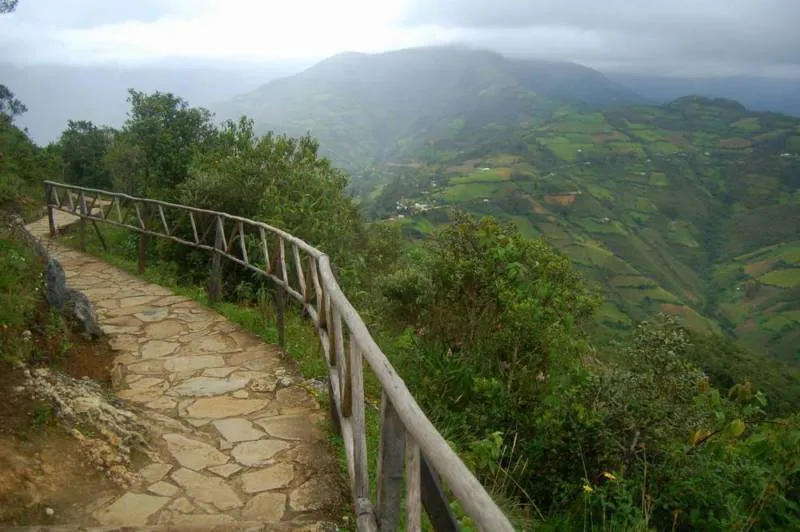
Pronounced KWAY-lahp, Kuelap’s Fortress is a walled city on top of a hill. The city dates from the 6th century AD and was used until the 16th century, presumably to indicate power or strength over the area. In 1843, a lawyer / judge from Chachapoyas came here to resolve the locals legal problems. He saw the fortress, which the locals used as a farm since they didn’t know what it was. He explored, found towers and houses inside, then wrote an article in a Lima paper to publicize his findings. It wasn’t until 1997 that it was first explored by modern archaeologists.
The 2.5km of walking to the entrance is relatively easy (once past the first set of stairs), though you’ll definitely want to bring some water or snacks. Even if exploring without a tour guide, there’s a fair bit of signage – but virtually everyone we saw was with a group thanks to it’s distance from Chachapoyas.
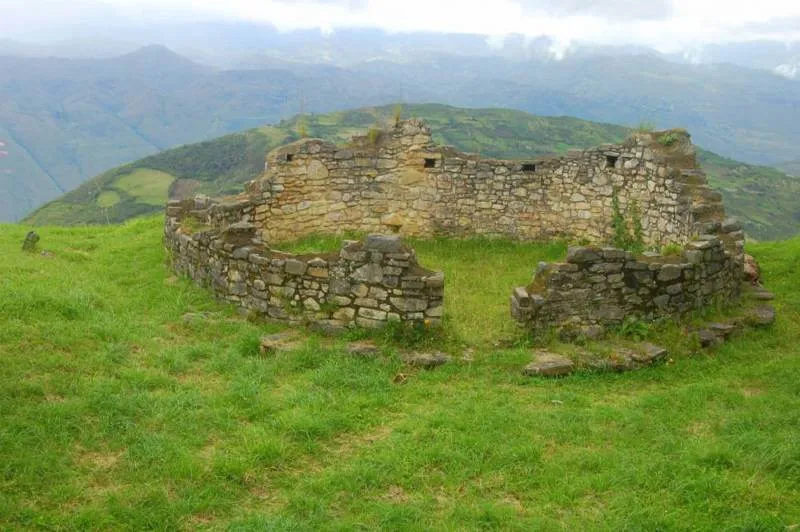
It’s a majestic view, surprisingly well-preserved, and offers lots of space. There are few guard rails or barriers from the sheer cliff as yet, and the guide jokingly cautioned the group about where not to take selfies. A bit of irony may depend on your guide’s knowledge – our guide pointed out a reconstructed building with a cone-shaped, straw roof. It’s falling apart, he said, because we don’t have and don’t know the technology to construct the buildings in the same way they did.
While the minivan ride here is a bit long and curvy, a new cable car in coming years promises to make that aspect of the journey a lot more captivating with a 20 minute, 4km cable car ride. It’s a fair bit of walking (probably 6-7km in all), but it’s worth it.
Chance of being the next Machu Picchu: good – very good once the cable car is finished.
Name: Fortaleza de Kuelap (Kuelap Fortress)
Address: Carretera a Kuelap, Chachapoyas, Amazonas, Luya Province, Peru (GPS: -6.417046, -77.923866)
Directions: You’re better off going with a group tour to arrive here. Start from Chachapoyas’ Plaza de Armas, where several tour groups offer tours. Pay a little extra to get an English tour guide. From the ticket office, begin heading up the steps – the first part is the hardest, but gets easier as you go.
Hours: 8:00am-5:00pm everyday.
Admission: 20 soles
Phone: none
Website: http://www.arqueologiadelperu.com.ar/kuelap.htm
Karajia sarcophogi / sarchaphoguses (60km from Chachapoyas)
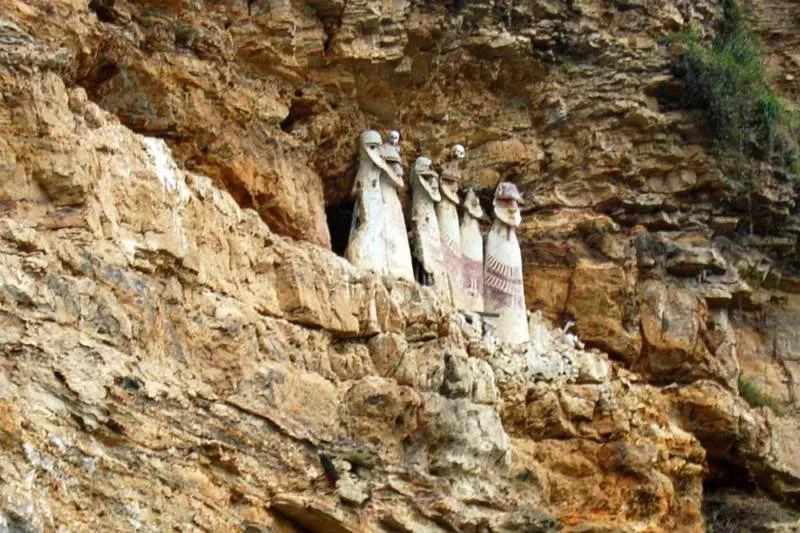
Oh boy, is it time for a contrast. Karajia’s sarcophagi / sarcophaguses are pretty far off the beaten path – far enough that the tour to go to them is only offered once or twice a week. This entire part of Peru is considered ‘less explored’, but you’d have to get seriously off the reservation to get much more unexplored than this.
The sarcophagi stand some 2.5 meters tall, though you’ll want your zoom lens or a decent set of binoculars to see any details of them. They’re perched perhaps 25-30 meters above the rough trail to reach them (more on that in a second), which saved them from looters but also prevents tourists from getting a close look. An earthquake toppled one of them in 1928, and another has been taken for studying.
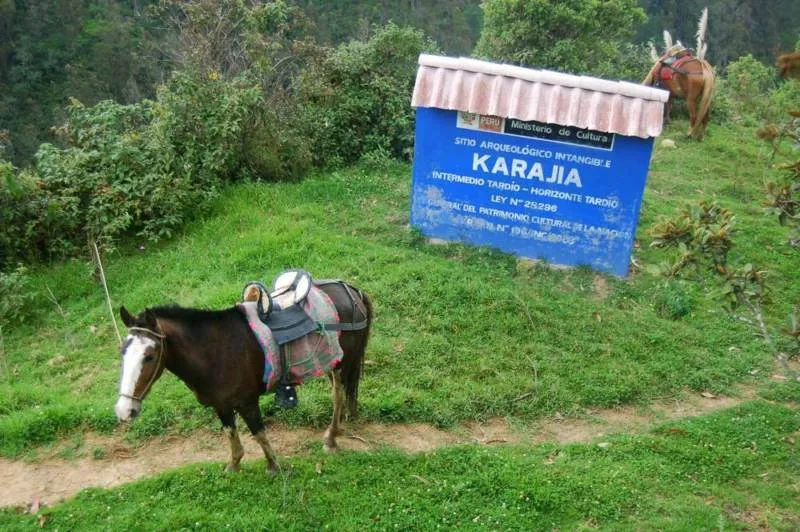
…and that’s it. The whole kit and kaboodle, the thing this place is known for, are those sarcophagi. (Our guide tried to point out a few other features on the hill, but they were essentially white specks on the mountainside.) Getting here is tough – after surviving a bouncy road that’s guaranteed to throw you about, you’ll descend a steep, muddy walking path even horses likely have a tough time with. The sign says one kilometer from the parking lot, but it’s arguably the toughest one-kilometer hike I’ve ever done. Solid hiking shoes are a must here – flip-flops and sandals just won’t cut it.
Chance of being the next Machu Picchu: nonexistent. It’s difficult to reach and only has the one sight to see.
Name: Karajia sarcophogi / sarchaphoguses
Address: an unnamed road northwest of Lamud District, Chachapoyas, Luya Province (GPS: -6.099092, -78.063779)
Directions: Forget about getting here independently. Start from Chachapoyas’ Plaza de Armas and book your tour to Karajia, which may not be available everyday due to lack of demand. With your tour, ride for about one hour until you arrive at the parking area. From here, it’s a steep, supposedly-one-kilometer hike (felt more like 1 1/2km, personally).
Hours: unclear – there are zero artificial lights around, however.
Admission: 5 soles
Phone: none
Website: none
Chan Chan (5km from Trujillo)
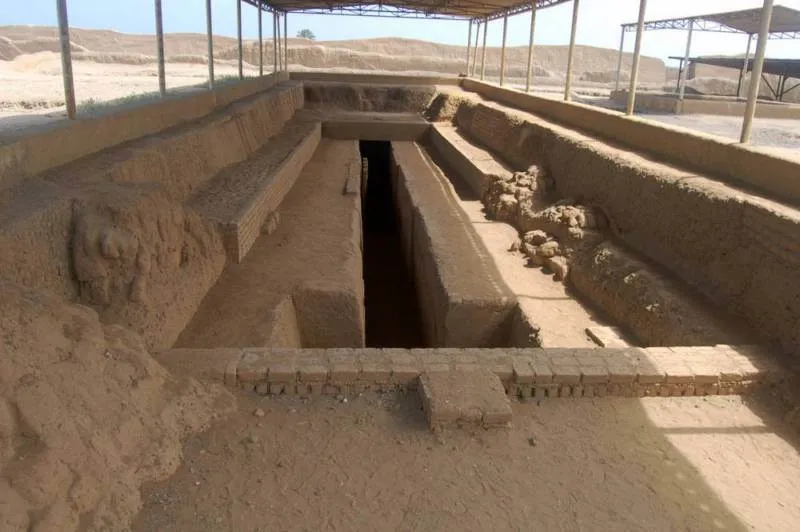
One of the more easily reached sites is actually four sites for one ticket – and it’s even got a cute name. The UNESCO World Heritage site is about 5 kilometers outside of Trujillo, and is the largest pre-Colombian city in South America. While the restoration is far from complete, there’s enough here to walk through to get an appreciation for how big this city was.
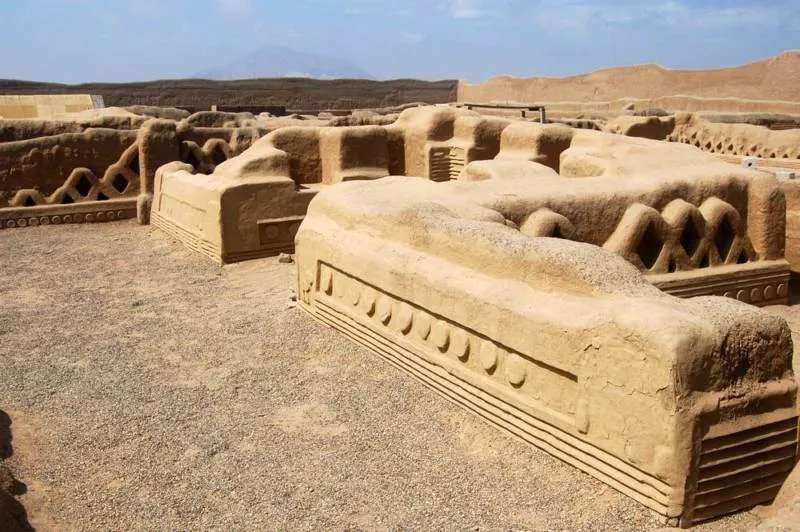
What’s missing is much that’s original, information, and infrastructure. It’s reasonably complete with walls and entranceways, but the millions of soles that have gone to the restoration haven’t gone to adding the color they know was there, or in displaying much in the way of recreations… The other sites, a disorganized museum and two further off lesser-developed pyramids, are at best supporting actors. The two places further off might be worthwhile if you want to get away from tourists, but they’re a taxi ride away.
Chance of being the next Machu Picchu: slim. Between the reality of natural erosion, some fading infrastructure, and a site with little original stuff on display, I’m not optimistic on this one.
Name: Chan Chan
Address: Along Manische rd. (route 104), Trujillo, Peru (GPS: -8.109720, -79.074968)
Directions: From Trujillo, jump on any red-and-yellow bus or minivan heading to Huanchaco. When paying, tell them you’re going to Chan Chan. They should stop along the main road – from here, you can either walk 1 1/2 kilometers down a side road to the entrance or take a taxi.
Hours: 9:00am-4:00pm (museum closed on Monday)
Admission: 10 soles for the ticket, 15 soles for optional guide, 3 soles for optional Spanish-language booklet
Phone: (044) 227705
Website: http://chanchan.gob.pe/
Huaca de Moche / Huaca de la Luna (10km from Trujillo)
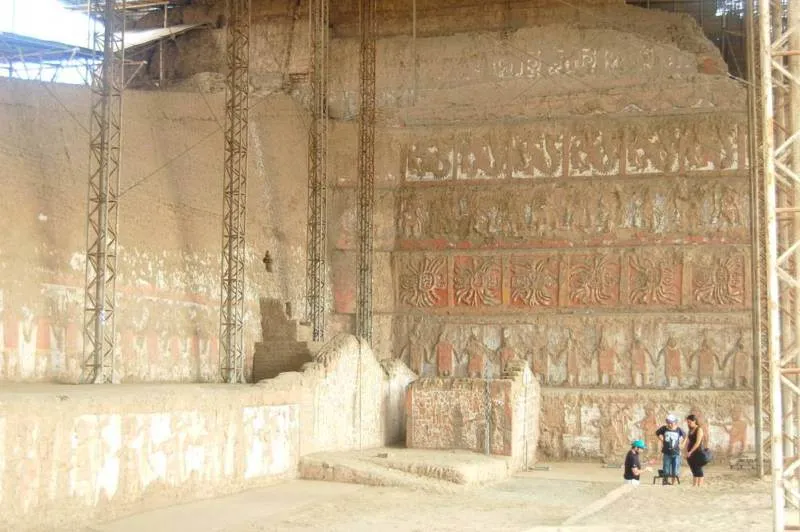
I’ll start by saying my bias is about to show. I’m biased towards places that are original, have something interesting to see, and are reasonably easy to access. I thoroughly enjoy places that have good info (both in terms of quality and quantity) on display, and if a guide is necessary, I appreciate having them add context or more details. While I understand the need to limit flash photography (especially around delicate artifacts, since the light can damage them), I hate it when all photography is prohibited.
On each of these, Huaca de la Luna delivers. The site’s easy enough to reach on your own, or with a group / tour guide if you prefer. Despite only being perhaps 10% excavated even though work began in 1991, the infrastructure is solid and built to last. The site sports no reconstructions, just restoration – since there’s plenty to work with that’s not all that difficult or surprising. The murals are colorful and still amazingly detailed for something well over a millennium old.
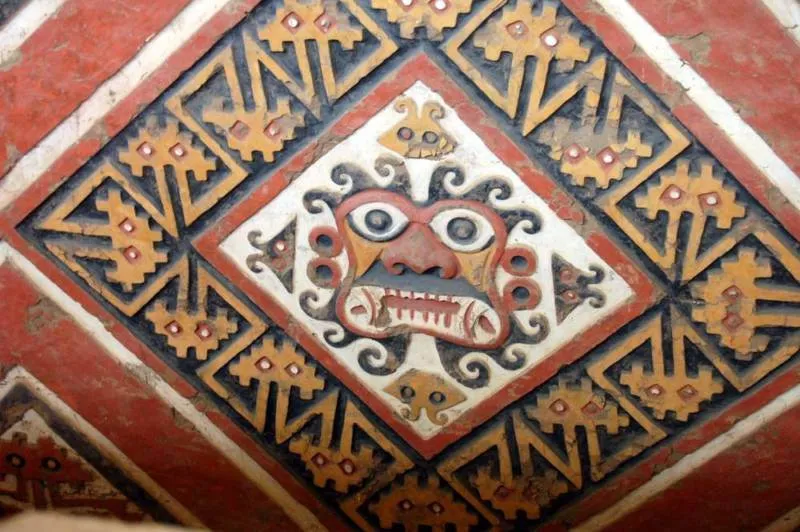
We arrived rather late in the day, and skipped the museum as we didn’t have the time. You’ll soon discover that private funding is what makes this site go around, and although I’m sure they’re always up for more funding, it definitely seems to have been spent well.
One caveat here has to do with the guides – they seemed rather disorganized. We waited about 20 minutes for a Spanish-language tour to start, though thankfully he also clued us in with English as well. A few rules for the site included one that was essentially ‘water is ok, other beverages aren’t’ and that ‘tour guides may not speak in more than two languages’. Best guess is that it has to do with ensuring tourists don’t get bunched up. Still, it was a straightforward site with lots to see – and a whole lot more to come.
Chance of being the next Machu Picchu: good. Probably not as good as government-run projects, though.
Name: Huaca de la Luna / Museum Huacas de Moche
Address: Carretera campiña de Moche, Trujillo, Peru (GPS: -8.141573, -78.992111)
Directions: From Trujillo, a number of minivans / colectivos can take you here. Start from the corner of Ave. Las Incas and Atahualpa (GPS: -8.115198, -79.022031) or the Plaza Miguel Grau (GPS: -8.123603, -79.023183) in southern Trujillo. Expect a 30-40 minute ride. Walk to the museum to buy your tickets, then enjoy the museum or head to the temple to get set up with a group
Hours: 10:00am-4:00pm everyday (tours seemed to start up til 4pm, not ‘you must be out by 4pm’
Admission: 5 soles for the museum, 10 soles for Huaca de la Luna
Phone: none
Website: http://www.huacasdemoche.pe


